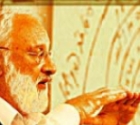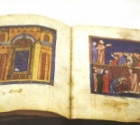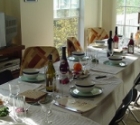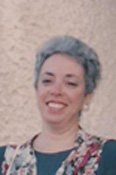-1366816606.jpg)
The army base receives the scroll
Redeemed scroll will ‘live once again’
On a cool, sunny day shortly after Tu Bishvat, I was invited to attend a ceremony at which a redeemed Torah scroll was donated to a newly built army base in Maale Levona by the Lowinger, Perlman, and Oratz families in memory of their parents, Ruth and Irving Oratz. Daniel Meyer, executive director of the International Young Israel Movement - Israel (IYIM), was coordinator of the affair and the liaison between the army, the rabbi, and all the people involved.
The Redeem a Torah Scroll Project was begun 12 years ago by Ruby Davidman, an American immigrant from New York, a Yeshiva University graduate and an active member and officer in the Young Israel Movement, which comprises a network of synagogues around the world. The project finds and restores worn or damaged Torah scrolls and brings them to any IDF base which lacks one. It was renamed the Ruby Davidman Redeem a Torah Project, in his memory.
A redeemed Torah scroll is one which has been repaired, either after having been saved from one of the European communities decimated in the Holocaust, or given by a synagogue in which it is no longer used. The cost of renewing a Torah scroll is a fraction of what it would cost to write a new one. The IYIM has already donated 200 such scrolls to the IDF. It was one such scroll, hailing from Des Plaines, a suburb of Chicago, which found its way to an army synagogue in the Shomron.
Overlooking the pristine Biblical landscape, nestled among the hills of Benjamin and Ephraim, are the city of Ariel and the settlements of Eli, Ofra, Shiloh, and Maale Levona. With very little effort one can imagine our forefathers tending their flocks of sheep or receiving guests in their tents. Our gas-guzzling camel climbed one of these hills leading to Maaleh Levona. "You don't need a GPS to get here," said our driver. "The last chapter of Judges tells you exactly where it is: ‘Shiloh, which is on the north of Beth-el, on the east side of the highway that goeth up from Beth-el to Shechem and the south of Lebonah.' "
Waiting for us were the soldiers of the Home Front, a newly formed battalion. "Our job here, which is mainly search and rescue, has become more difficult since the last war," said the officer in charge of the base.
The music started and the repaired Torah was held in turn by family, soldiers, and friends under a portable wedding canopy while we all clapped and danced toward the modest new army synagogue where it was placed in the ark. Renowned Klezmer clarinetist Bernie Marinbach, a friend of the family, accompanied the Torah all the way. A soldier with long side curls (peyot), a large kippa, and ritual fringes (tzitzit) showing outside his belt had his arm around a bareheaded soldier who in turn had his arm around soldiers wearing embroidered or black kippot. Everyone was dancing. The atmosphere was joyous, genuine, and festive.
Once inside the synagogue, we recited the appropriate prayers and read the dedication which the family had composed and embroidered on the Torah mantle. We then moved to the adjacent social hall where beautifully arranged refreshments were waiting, prepared by the much appreciated cook and kashrut supervisor. The families received certificates of appreciation from Young Israel, and members of the family spoke, as did the division commander.
"Our job is to protect the communities in this area," he said. "And our best weapon is right here — our own Torah."
 ESRAmagazine Photo Contest: terms and conditions
ESRAmagazine Photo Contest: terms and conditions Advertisers List
Advertisers List-1366906022.jpg) Mayor at tree planting
Mayor at tree planting Kabbalah For All
Kabbalah For All Haggadot
Haggadot Passover 5767 ...The Holiday of Freedom
Passover 5767 ...The Holiday of Freedom Judy Shapiro
Judy Shapiro